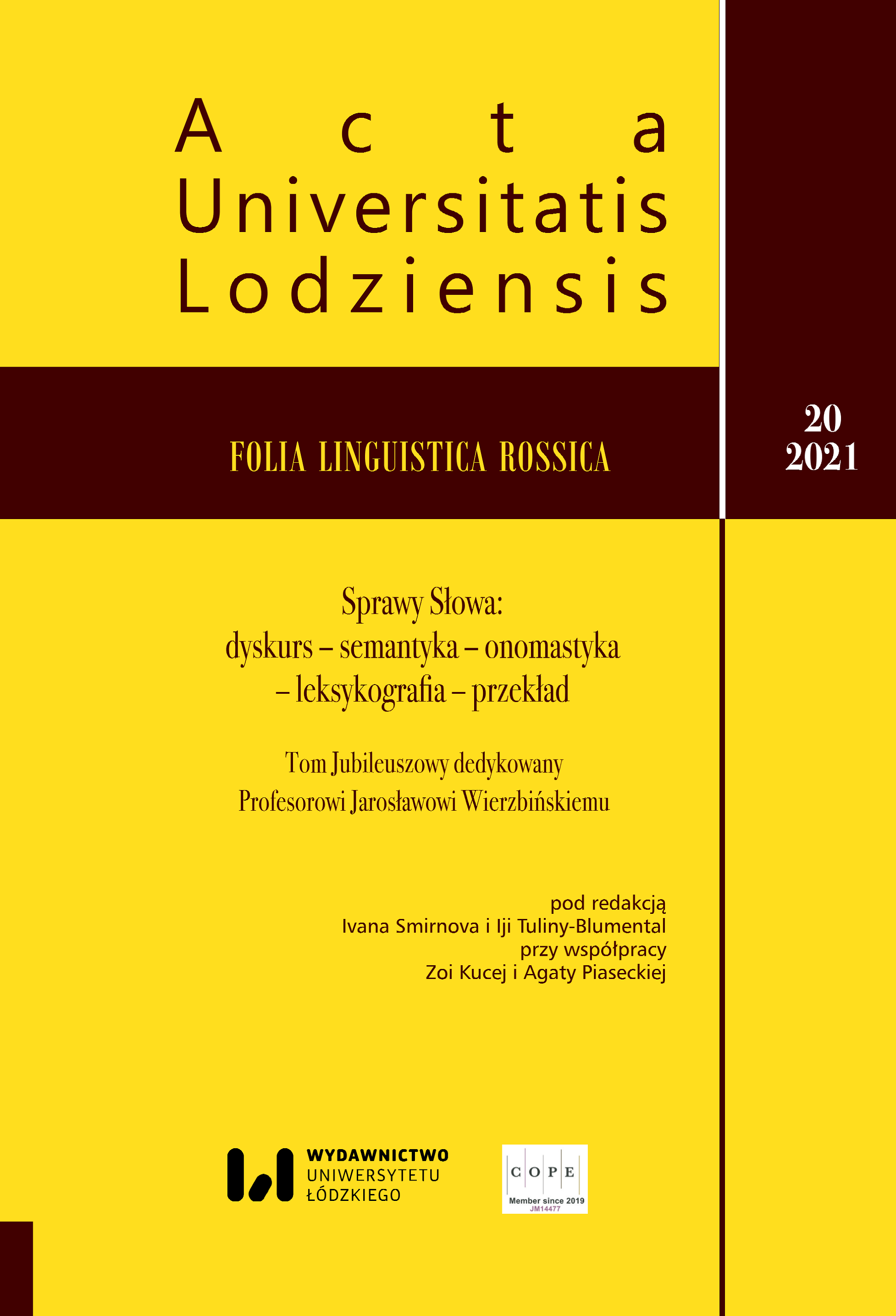Ономастический мир Михаила Зощенко
The Onomastic World of Mikhail Zoshchenko
Author(s): Vasilij SuprunSubject(s): Language and Literature Studies
Published by: Wydawnictwo Uniwersytetu Łódzkiego
Keywords: onomastics; Mikhail Zoshchenko; anthroponym; toponym; Jarosław Wierzbińsk
Summary/Abstract: The article discusses the onyms used by Mikhail Zoshchenko in his stories and novellas through their three functions: 1) designation of the main character and place of action; 2) nomination of a minor character and geographical object; 3) designation of a background character or object. The article continues the research on Zoshchenko started by the Polish scientist Jarosław Wierzbiński. Anthroponyms in the works of M.M. Zoshchenko denote the main and secondary progatonists, toponyms (oikonyms, urbanonyms, etc.) used for the place of action, and units of peripheral categories, which most often act to designate background objects. The author names his protagonists by their first name and patronymic, which is a specific feature of the Russian etiquette that distinguishes it from the cultural and linguistic situations of other peoples. The writer calls persons from a lower level of the society with brief and familiarly disparaging forms of the anthroponym.The onomastic style of M.M. Zoshchenko includes the use of the full anthroponymic formula: first name + patronymic + surname when presenting a protagonist. In the stories of Zoshchenko, there are toponyms, such as Moscow, Leningrad, Ligovo, Yalta, Kislovodsk, etc.; urbanonyms: Bolshaya Prolomnaya Street, Glazova and Borovaya Streets, ergonyms: Petrosovet, Shchukin market, hotel “Europe” etc. Proper names are woven into Zoshchenko’s texts as an obligatory and organizing component. They interact with other textual elements and demonstrate their visual capabilities in a broad and narrow context.
Journal: Acta Universitatis Lodziensis. Folia Linguistica Rossica
- Issue Year: 2021
- Issue No: 20
- Page Range: 121-131
- Page Count: 11
- Language: Russian

